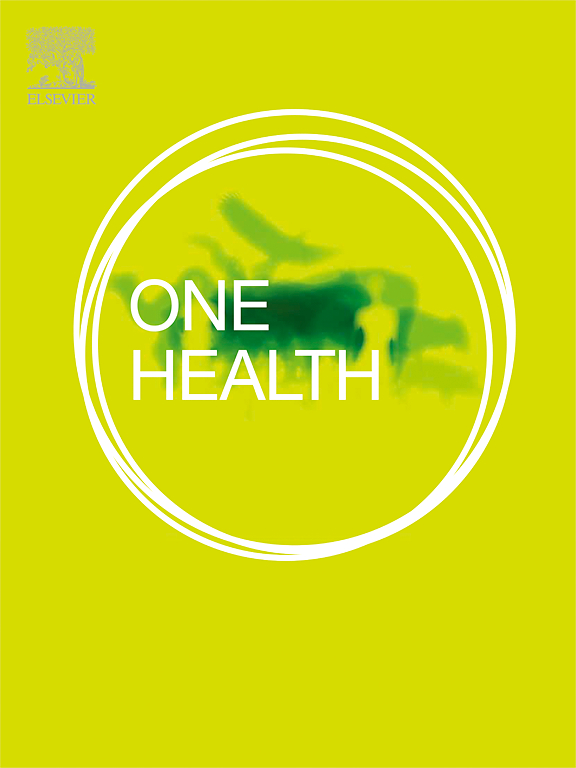六个太平洋岛屿国家蚊虫取样方法的比较
IF 4.5
2区 医学
Q1 INFECTIOUS DISEASES
引用次数: 0
摘要
虫媒病毒性疾病的暴发对太平洋岛屿国家和领土的卫生安全构成重大威胁。在缺乏疫苗或治疗的情况下,有效的病媒控制对于减少风险和应对疫情至关重要。这依赖于可持续的蚊子监测战略,以确定病媒并指导控制工作。本研究在6个太平洋国家(库克群岛、斐济、基里巴斯、萨摩亚、所罗门群岛和汤加)评估了BG- sentinel II (BGS)诱捕器、BG Gravid Aedes诱捕器(GAT)和扫网(SWN) 3种成蚊取样方法的性能和可行性。在18个地点的54个站点中,采样遵循拉丁方形设计。数据使用广义线性混合模型和辛普森多样性指数进行分析。与公共卫生工作人员的定性访谈获得了业务经验。共捕获蚊虫2815只,其中伊蚊占61%。不同国家间物种组成差异显著(p <;0.05)。BGS捕蚊器比GAT和SWN捕到的蚊子多得多(p <;0.05)。在不同的采样方法中没有观察到主要的物种偏差。接受采访的公共卫生工作人员强调了指导、共同设计和为业务研究提供资源的价值。太平洋地区的具体环境挑战凸显了对常规使用的简单、耐用工具的需求,特别是在远程环境中使用的工具。这是第一次在太平洋进行的多国研究,比较伊蚊的采样方法。本文章由计算机程序翻译,如有差异,请以英文原文为准。
A comparison of mosquito sampling methods in six Pacific Island countries
Outbreaks of arboviral diseases pose a significant threat to health security in Pacific Island countries and territories. In the absence of vaccines or treatments, effective vector control is critical to reduce risk and respond to outbreaks. This relies on sustainable mosquito surveillance strategies to identify vectors and guide control efforts. This study evaluated the performance and feasibility of three adult mosquito sampling methods—BG-Sentinel II (BGS) traps, BG Gravid Aedes Traps (GAT), and sweep netting (SWN)—in six Pacific countries: Cook Islands, Fiji, Kiribati, Samoa, Solomon Islands, and Tonga. Sampling followed a Latin square design across 54 sites in 18 locations. Data were analysed using a generalised linear mixed model and Simpson's Index for diversity. Qualitative interviews with public health staff captured operational experiences. 2815 mosquitoes were collected, with Aedes species comprising 61 %. Species composition varied significantly between countries (p < 0.05). BGS traps yielded considerably more mosquitoes than GAT and SWN (p < 0.05). No major species bias was observed across sampling methods. The public health staff interviewed emphasised the value of mentoring, co-design, and resourcing for operational research. Pacific context-specific challenges underscored the need for simple, durable tools for routine use, particularly if to be used in remote settings. This is the first multi-country study conducted in the Pacific to compare Aedes sampling methods.
求助全文
通过发布文献求助,成功后即可免费获取论文全文。
去求助
来源期刊

One Health
Medicine-Infectious Diseases
CiteScore
8.10
自引率
4.00%
发文量
95
审稿时长
18 weeks
期刊介绍:
One Health - a Gold Open Access journal.
The mission of One Health is to provide a platform for rapid communication of high quality scientific knowledge on inter- and intra-species pathogen transmission, bringing together leading experts in virology, bacteriology, parasitology, mycology, vectors and vector-borne diseases, tropical health, veterinary sciences, pathology, immunology, food safety, mathematical modelling, epidemiology, public health research and emergency preparedness. As a Gold Open Access journal, a fee is payable on acceptance of the paper. Please see the Guide for Authors for more information.
Submissions to the following categories are welcome:
Virology,
Bacteriology,
Parasitology,
Mycology,
Vectors and vector-borne diseases,
Co-infections and co-morbidities,
Disease spatial surveillance,
Modelling,
Tropical Health,
Discovery,
Ecosystem Health,
Public Health.
 求助内容:
求助内容: 应助结果提醒方式:
应助结果提醒方式:


